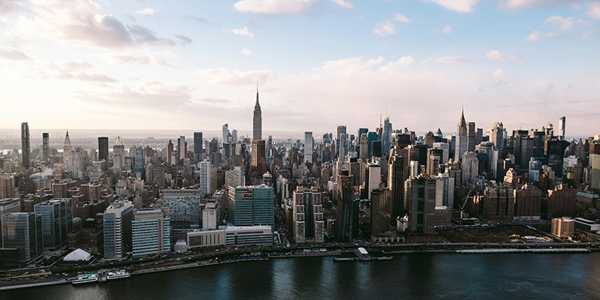Home Improvement
Fence Installation: Cost, Options, and What to Know in 2025
Across residential neighborhoods, more property owners are choosing to install fencing not only for added privacy and security but also to improve curb appeal and boost property value. Whether you’re putting up a brand-new fence or replacing an older one, understanding the current material options, pricing expectations, and installation services can help you make informed choices.
Across residential neighborhoods, more property owners are choosing to install fencing not only for added privacy and security but also to improve curb appeal and boost property value. Whether you’re putting up a brand-new fence or replacing an older one, understanding the current material options, pricing expectations, and installation services can help you make informed choices.

Exploring the Types of Fencing Available
The material you select will greatly affect the fence’s longevity, appearance, and required upkeep. Below are some of the most commonly used fencing options today:
• Wood: Offers a timeless, natural look and can be customized with stain or paint, though it does demand regular maintenance.
• Vinyl: Known for being low-maintenance and weather-resistant, with a sleek, modern look.
• Aluminum: A lightweight, rust-proof option that's great for decorative fencing.
• Chain Link: Cost-effective and practical, especially when enclosing larger properties.
• Composite: Combines wood fibers and plastic for a strong, low-maintenance solution.
Major retailers like Lowe’s and The Home Depot stock a wide array of fencing materials to match both classic and contemporary design preferences.
2025 Fence Pricing: What You Need to Know
The cost of fence installation in 2025 reflects evolving labor rates, material costs, and local demand. On average, homeowners can expect to pay between $15 and $50 per linear foot, depending on material choice and the complexity of the project.
Angi’s latest estimates show that pricing can fluctuate based on several key factors:
• The height and total length of the fence
• The type of material used (wood tends to have the most variable costs)
• Permit fees or zoning requirements
• Additional site work, such as removing trees, clearing land, or demolishing old fencing
Retailers provide tools to help homeowners budget accordingly. For instance, The Home Depot’s fencing cost estimator uses local pricing to deliver a more accurate project forecast.
Should You Hire a Pro or Go DIY?
While some homeowners are comfortable handling installation themselves, others may prefer hiring professionals to ensure precision and efficiency. The right approach often depends on the design’s complexity, your experience level, and the project’s scale.
Professional installation services offer distinct advantages:
• Correct placement and secure post-setting
• Timely completion
• Familiarity with permits and municipal codes
• Warranties covering both materials and labor
Lowe’s and The Home Depot both offer end-to-end fencing services, managing everything from material drop-off to cleanup, making the process more streamlined.
Tips for Saving on Fence Installation in Los Angeles
In areas like Los Angeles, discounts and seasonal promotions can lead to considerable savings. Large retailers frequently run deals throughout the year, and local contractors may lower labor prices during off-peak times.
To reduce overall costs, homeowners can:
• Schedule installation during the winter or early spring
• Choose standard panels over custom designs
• Take on tasks like old fence removal themselves
• Collect and compare quotes from different companies
It’s also worth checking with retailers such as Menards®, which regularly offers rebates and local delivery discounts for bulk purchases.
Partnering with Local Fence Installers in Los Angeles
Selecting a trustworthy contractor involves more than just choosing the lowest bid. Look for local companies that provide:
• Proper licensing and insurance
• Written, itemized estimates
• Defined timelines and warranty terms
• References or verified customer feedback
Reputable installers usually perform an on-site evaluation to assess terrain, obstacles, and access issues before finalizing a quote. Whether it’s a modest backyard fence or a large perimeter project, seasoned professionals in Los Angeles are familiar with city regulations and HOA requirements—essential for avoiding permit-related headaches.
Permits, Zoning, and Community Regulations
Before any work begins, it’s crucial to research and comply with local codes. Common regulations include:
• Maximum fence height (especially near roads or driveways)
• Approved materials for residential zones (e.g., bans on barbed wire)
• Required setbacks from sidewalks or neighboring properties
Skipping the permit process can lead to fines or the need to remove non-compliant fencing. Some municipalities allow online applications, while others require in-person visits to local planning offices. Your chosen contractor can typically assist with this process.
2025 Fencing Trends to Watch
Homeowners in 2025 are exploring more than traditional wood or chain-link options. Current trends reflect a push toward sustainability and modern design. Noteworthy styles include:
• Horizontal Wood Slats: Provide a sleek, contemporary aesthetic.
• Black Aluminum: Delivers a refined, industrial look with minimal upkeep.
• Living Fences: Utilize hedges or climbing plants on frames for a natural barrier.
• Textured Vinyl: Replicates the appearance of wood without the associated upkeep.
Smart-home compatible fencing that integrates with security systems—like motion sensors and surveillance cameras—is also gaining momentum.
Final Thoughts on Planning Your Fence Installation
Installing a fence is one of the most functional and value-adding improvements homeowners can make. Whether your goal is enhanced privacy, improved safety, or a stylish upgrade, carefully selecting materials, understanding costs, and choosing skilled professionals will help ensure a smooth project with lasting results.
Before moving forward, browse materials at reputable retailers like Lowe’s, The Home Depot, and Menards®. Gather quotes from Los Angeles contractors, consider your DIY capabilities, and make 2025 the year you transform your property with a well-chosen fence.



